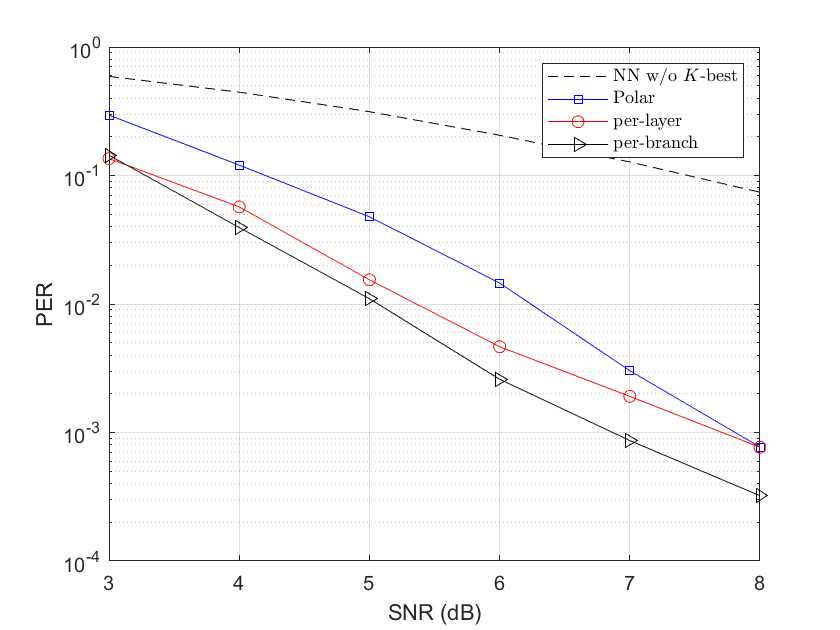Source Code for My Master Thesis in Umich, "Learning-Based Near-Orthogonal Superposition Code for MIMO Short Message Transmission", accepted to IEEE Transactions on Communications, 2023.
Apply deep learning based joint coding and modulation scheme termed as NOS code (Near-Orthogonal Superposition code) to the multi-input multi-output (MIMO) system for short packet transmission. Simulation results show the proposed scheme outperforms maximum likelihood (ML) MIMO detection combined with a polar code with CRC-assisted list decoding by 1 - 2 dB in various MIMO systems for short (32 - 64 bit) message transmission.
The flowchart of the MIMO-NOS:
- Python (3.6.9 or above)
- numpy
- pytorch 1.10.0+cu102
- visdom
Basically, one can reproduce the PER results following two steps:
Perform end-to-end training to obtain good codebook
$ python3.6 mimo_simu.py
to train the neural encoder and decoder. You are able to get a '.pth' file (neural network model), which will be used to construct the codebook for the second step.
We design a hand-crafted looped-kbest decoder to decode the received signal. Sorting is used to determine the decoding order of the
To run the looped-kbest decoder, change the hyperparameters to be consistent with that in 'mimo_simu.py', type
$ python3.6 looped_kbest_bs.py
for Per-branch sorting, while run looped_kbest_ls.py for Per-layer sorting.
Polar with maximum-likelihood (ML) MIMO detection serves as the baseline. We select Polar with CRC because of its superior performance in short block length. Moreover, the optimal ML detector ensures a good baseline.
Run the matlab code mypolar.m to obtain the PER curve.
PER performance for 64-bit packet transmission under 4x4 MIMO.
Moreover, the proposed MIMO-NOS is able to process with faster speed compared to the baseline.
I've graduated successfully as a master student in the EECS department of the University of Michigan. Many thanks to my supervisor Hunseok and the group members, Mingyu, Chinwei and Changwoo!

